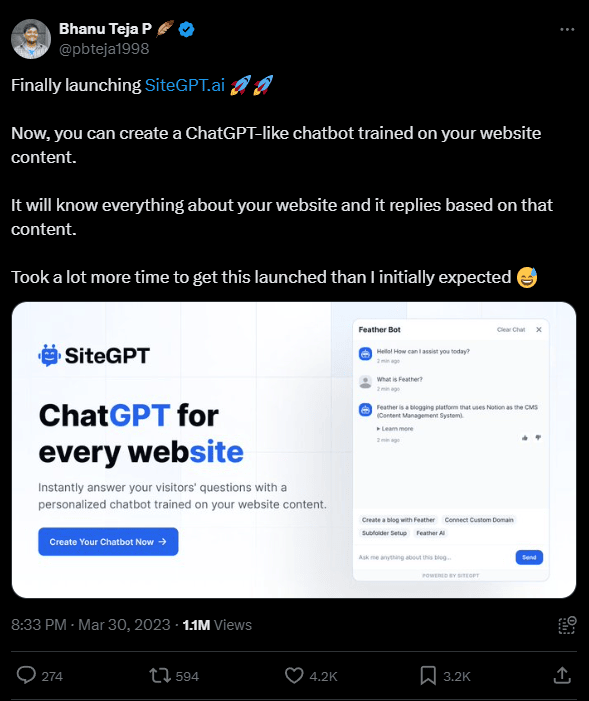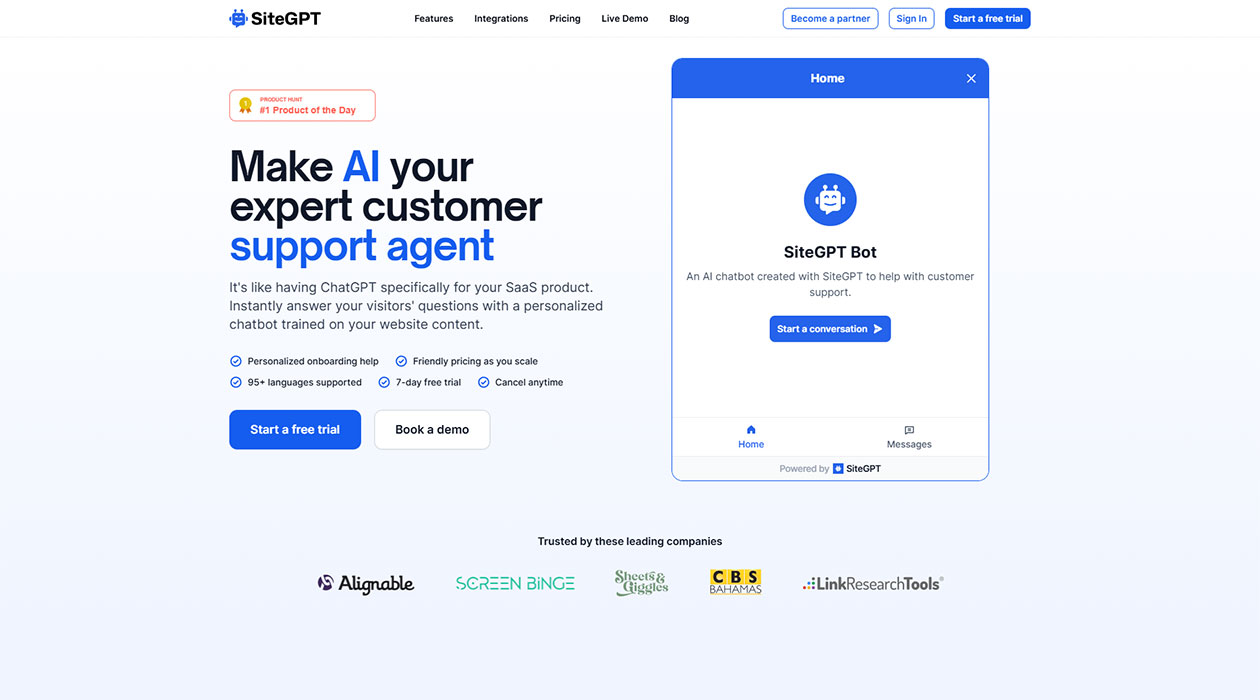SiteGPT is an AI chatbot platform. It allows you to create personalized chatbots trained on your website content.
It was founded by Bhanu Teja in 2023. Within six months, it reached $15k MRR.
How Bhanu Teja got the idea for SiteGPT
Before SiteGPT, Bhanu Teja was focused on another product called Feather. Feather is a blogging platform that leverages Notion as its CMS. Users write content on Notion, and Feather automatically turns it into an SEO-friendly blog post.
As OpenAI and other AI companies kept releasing powerful products, Teja’s Twitter feed was filled with AI-related content. This piqued his interest, leading him to consider how AI could benefit Feather users.
Teja then realized that all his customers had blogs. He thought, why not create a feature that lets people chat with these blogs? That was the initial spark.
SiteGPT started as a side project and a feature within Feather.
Feather was performing decently, with around $4k in MRR. However, as Teja worked on the new feature, he recognized its vast potential. He didn’t want to restrict it to just Feather users. He saw that anyone with a website could benefit from it. This realization led him to launch SiteGPT as a standalone product.
How the app was created
Teja built a basic version of SiteGPT in just 2-3 weeks and launched it. Initially, it had only the core feature: you add your website link, and a chatbot gets created and trained on your website’s content. That was all the chatbot could do at launch. His strategy was to launch quickly and improve later based on user feedback.
He used Remix to build the app and deployed it on Cloudflare Workers, with Fauna as the database. The setup was straightforward and didn’t incur additional costs since he was already using Fauna and Cloudflare for Feather. The only significant expenses he anticipated were from OpenAI and Pinecone, the vector database for SiteGPT.
Teja set a higher price for the product to avoid unexpected bills post-launch. There was no free plan because he wasn’t confident converting free users to paid customers. From the start, SiteGPT was a paid-only product.
How he acquired the first few customers
Teja had around 10,000 Twitter followers. He frequently mentioned on Twitter that he would be launching a new AI product soon. He didn’t have much expectations. He thought getting even one customer on launch day would be a success.

However, his launch tweet quickly gained traction. About 15,000 people visited the website on launch day, and the first few customers signed up within the first hour.
Three days later, Teja posted about SiteGPT on Hacker News’s Show HN section. The post made it to the front page and stayed there for several hours.
Two days after that, he launched SiteGPT on Product Hunt. It received over 100 upvotes within the first 2-3 hours and reached the #2 position. By the end of the day, it was the #1 product of the day and the #4 product of the week.
Following these launches, people began sharing and discussing SiteGPT organically, leading to steady growth.
Within a month of launch, SiteGPT achieved $10k in MRR. However, almost 50% of customers churned after the first month, bringing the revenue down to $5k in the second month.
After the initial hype, Teja began receiving signups from real businesses that had problems SiteGPT could solve. Today, the revenue hovers around $15k in MRR.


